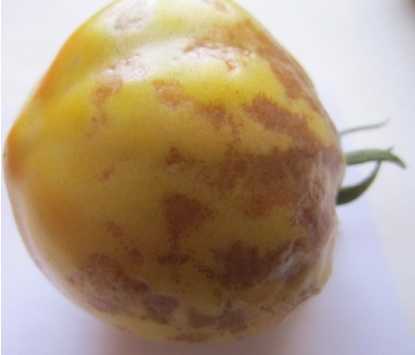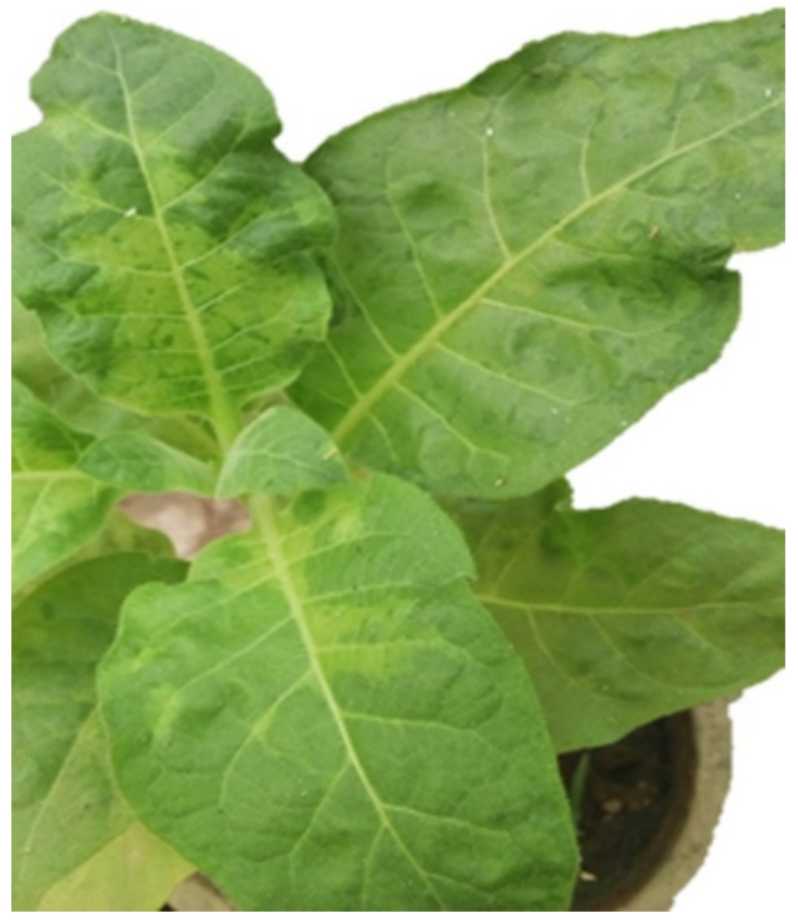Tomato Mosaic Virus (ToMV) ELISA Kit
Regulatory status: For research use only, not for use in diagnostic procedures.
2. Detecting Conjugate, alkaline phosphatase: 0.25 mL.
3. ELISA Plate: 5×96T. Empty ELISA plate with high binding capacity. The plate should be used for our ELISA Reagents to achieve a maximum test results.
4. Coating Buffer 10×: 6 mL
5. Sample Buffer: 11.6g
6. Conjugate Buffer 10×: 6 mL
7. PBST Buffer (Powder): 28.7g
8. Tween-20: 7.0g
9. PNP Buffer (5×): 10 mL
10. PNP Tablet: 10 Tablets
| Product Name | Cat. No. | Applications | Host Species | Datasheet | Price | Add to Basket |
|---|
| Product Name | Cat. No. | Applications | Host Species | Datasheet | Price | Add to Basket |
|---|
ToMV – The Tomato Mosaic Virus (TMV) is a potent member of the family Virgaviridae genus, Tobamovirus. It is a broadly pathogenic plant pathogen, most common in Solanaceae plants, including tomatoes. ToMV infection in tomatoes generally results in mottling, stunted growth and leaf deformation which significantly diminish yield and quality, at the cost of 15% to 25% economic loss. The ToMV genome is a single-stranded positive-sense RNA (+ssRNA) virus with a length of approximately 6.4 kb and four ORFs. Orf1 and ORF2 are two members of the viral replication enzyme complex, ORF3 is a 30 kDa movement protein (MP), and ORF4 is a 17-18 kDa capsid protein (CP). These genes play a role in not just viral replication and cell-to-cell migration but also long-distance spread. The viral particles of ToMV are rod-shaped, approximately 300 nm in length and 18 nm in diameter, and exhibit strong environmental adaptability and high transmission capacity. Its main mode of transmission is mechanical contact, including spread through infected plant seeds, tools, workers' hands, or clothing. Moreover, ToMV particles can remain infectious in soil, plant debris, and irrigation water for extended periods. Even in harsh environments, the virus can survive for years, further enhancing its prevalence and severity in agricultural fields. Infected seeds are a key source of ToMV transmission, with viral particles potentially adhering to the seed coat or present within the endosperm. Once the virus is introduced into seedlings via mechanical injury, it spreads rapidly and can disseminate throughout the field via plant-to-plant mechanical contact. At the molecular level, the genomic structure and functions of ToMV have been extensively studied. The 126 kDa and 183 kDa replication proteins are read-through products of the genome RNA and constitute the replicase complex, which is a read-through product of the former. They play not just a role in viral RNA replication, but also in transcription. The 126 kDa and 183 kDa replication proteins are translated from the genome RNA, and are called the replicase complex (which is the read-through product of the first). These proteins participate not only in the replication of viral RNA, but also in transcription. The 30 kDa movement protein moves the virus between host cells and the capsid protein (CP) is not only the primary structural element of the virus particles, it is also important for long-range transmission of the virus. Because ToMV has a strong economic value and is easy to manipulate genetically, the virus has been used for decades as a test bed for plant-virus interaction, and sometimes as an alternative to Tobacco Mosaic Virus (TMV).
 Figure 1. Necrotic Spots Caused by Tomato Mosaic Virus (ToMV) (Source: Petrov, N., et al., 2014)
Figure 1. Necrotic Spots Caused by Tomato Mosaic Virus (ToMV) (Source: Petrov, N., et al., 2014)
The evolutionary history of ToMV remains controversial. Some studies have suggested that the common ancestor of tobamoviruses evolved on plants many millions of years ago, much earlier than the evolutionary rate of animal RNA viruses. But we also know that tobamoviruses evolved at the same rate as animal RNA viruses, perhaps emerging in the past 100,000 years. Despite these unresolved debates, phylogenetic and geographical studies of ToMV suggest that the virus's spread across Eurasia is closely tied to agricultural activities. In agriculture, the primary strategies for mitigating ToMV damage include genetic resistance in tomatoes and stringent agricultural management measures. Genetic resistance has been achieved through the identification of three dominant resistance genes—Tm-1, Tm-2, and Tm-22—derived from wild relatives of tomato, Lycopersicon hirsutum and Lycopersicon peruvianum. These genes have been incorporated into commercial tomato cultivars, providing an effective immune barrier for the plants. However, the virus's rapid mutation and genetic recombination can lead to the emergence of new virulent strains that overcome these resistance genes. For example, when Tomato brown rugose fruit virus (ToBRFV) was first discovered in 2014, it exhibited the ability to overcome the Tm-2² resistance gene, posing a significant challenge to the continued use of existing resistant varieties. In crop production, selecting resistant varieties can significantly reduce the risk of viral infection. Varieties such as "Cherry Wonder" and "Cumulus" have shown strong resistance to TMV. Additionally, avoiding the planting of susceptible varieties in regions with high virus incidence and regularly rotating with non-host crops can effectively break the virus transmission cycle. For unavoidable physical transmission risks, it is recommended that growers implement zonal management to ensure that infected areas do not affect healthy plants. Environmental conditions significantly influence the expression of symptoms. Factors such as temperature, light intensity, and day length regulate viral activity and host response. Some varieties, for example, might have more necrotic material in their leaves in warmer climates, but infection may be late or never developed in colder environments. In addition, plant age and the virulence of the viral strain are important indicators of symptoms severity. Growers must carefully monitor the complex regulation of symptom expression by these environmental and biological factors.
 Figure 2. Symptoms of Tomato Mosaic Virus Infection Induced in N. tabacum cv. Samsun (B) by Mechanical Inoculation with ToMV-Egypt Strain (ToMV-EG). (Source: Sofy AR, et al., 2021)
Figure 2. Symptoms of Tomato Mosaic Virus Infection Induced in N. tabacum cv. Samsun (B) by Mechanical Inoculation with ToMV-Egypt Strain (ToMV-EG). (Source: Sofy AR, et al., 2021)
In terms of virus detection, standard serology — enzyme-linked immunosorbent assays (ELISA) and western blotting — cannot reliably distinguish ToMV from other tobamoviruses (ToBRFV, TMV) because their capsid proteins are highly conserved. This led to the evolution of molecular detection methods such as deep sequencing, sequence-specific RT-PCR and loop-mediated isothermal amplification (LAMP). Additionally, the introduction of the CRISPR/Cas system has provided a new direction for plant virus detection. By designing specific crRNA to bind with Cas12a proteins, researchers can rapidly and accurately detect ToMV and related viruses. This method uses the fluorescence signal generated by non-specific single-stranded DNA degradation to achieve highly sensitive virus detection. For virus management and control, integrated control measures are critical. Infected plants should be removed promptly, and strict hygiene practices should be implemented, including regular disinfection of tools, gloves, and clothing. It has been shown that soaking tools in a 1:9 diluted bleach solution for 1 minute or in a 20% skim milk solution is also effective. Furthermore, tobacco products should not be used near tomato plants, as they may serve as vectors for TMV. Although there are no direct chemical control methods currently available, reducing virus vectors, such as aphids and thrips, is an important indirect control strategy. For aphids, growers can use biological control agents or vegetation diversification to reduce vector populations and slow down the transmission of the virus. Additionally, in greenhouse environments, maintaining good ventilation and avoiding overcrowding of plants can reduce the risk of mechanical transmission between plants.
ToMV Detection ELISA Kit
Tomato Mosaic Virus ELISA
ToMV Antigen Detection Kit
Tomato Mosaic Virus Antibody Test Kit
References
1. Petrov, N. DAMAGING EFFECTS OF TOMATO MOSAIC VIRUS AND POTATO VIRUS Y ON TOMATO PLANTS. Science & Technologies. 2014; IV(6):56.
2. Sofy AR, Sofy MR, Hmed AA, Dawoud RA, Alnaggar AE-AM, Soliman AM, El-Dougdoug NK. Ameliorating the adverse effects of tomato mosaic tobamovirus infecting tomato plants in Egypt by boosting immunity in tomato plants using zinc oxide nanoparticles. Molecules . 2021;26(5):1337.
An inhibitor of viral RNA replication is encoded by a plant resistance gene
PROCEEDINGS OF THE NATIONAL ACADEMY OF SCIENCES OF THE UNITED STATES OF AMERICA
Authors: Ishibashi, Kazuhiro; Masuda, Kiyoshi; Naito, Satoshi; Meshi, Tetsuo; Ishikawa, Masayuki
Inducible viral inoculation system with cultured plant cells facilitates a biochemical approach for virus-induced RNA silencing
ARCHIVES OF VIROLOGY
Authors: Tamai, Atsushi; Dohi, Koji; Mori, Masasi; Meshi, Tetsuo; Ishikawa, Masayuki
Invoice / Purchase Order
Credit card
![]()